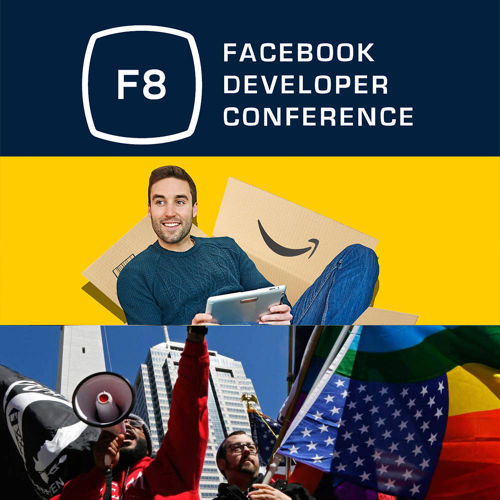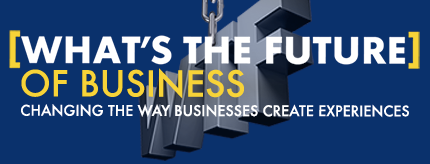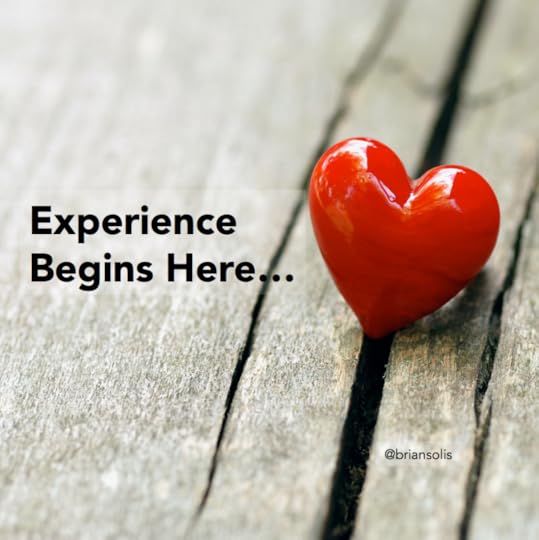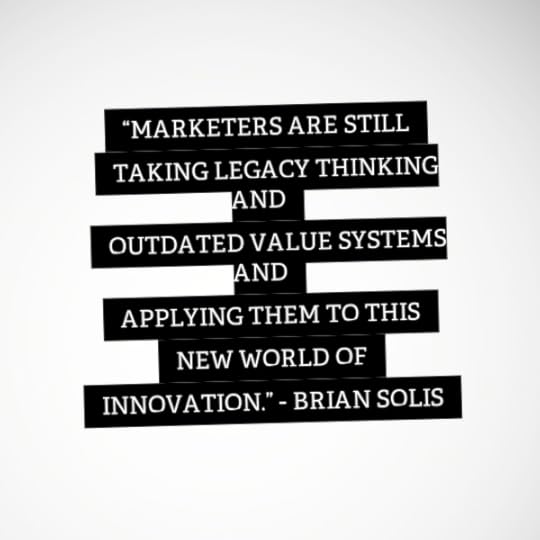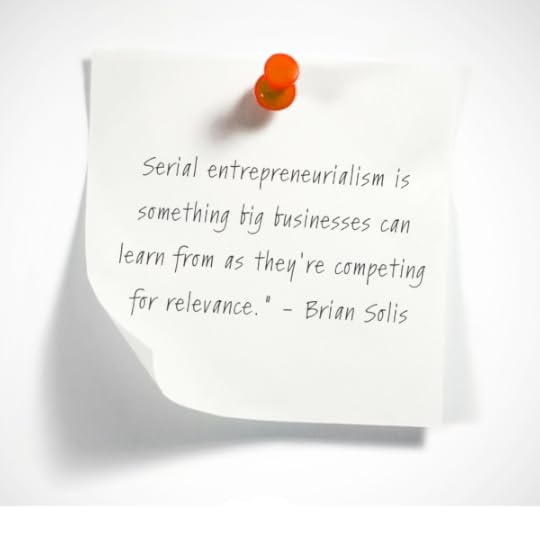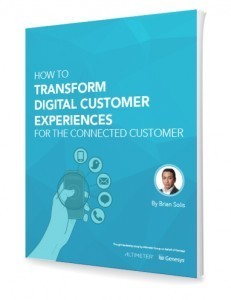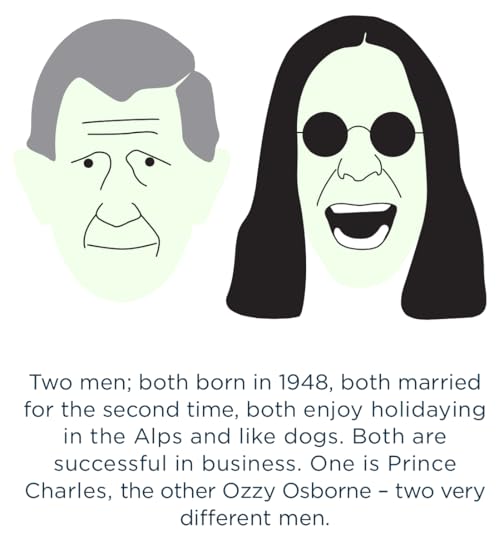Brian Solis's Blog, page 103
April 6, 2015
Facebook’s Messenger Becomes a Platform, The Sharing Economy Creates a Shut-in Economy + WTF Indiana – ContextMatters #8
Facebook Messenger Becomes a Platform
Following F8, Facebook’s semi-annual developer conference in 2014, I suggested that Facebook was evolving from a social network into a bona fide social ecosystem. In 2015, we can see that Facebook is thinking beyond the unbundling of its popular features but also turning them into independent and connected platforms. Following this year’s F8, Facebook introduced new features for payments within Messenger as well as opening direct lines of communication between users and businesses. Additionally, Facebook opened Messenger to developers to help augment and enhance the user experience and capabilities.
The Sharing Economy Begets the Shut-In Economy
Whatever you call it, the sharing economy, the collaborative economy, the rental economy, in the end, new services such as Uber, Instacart, Fluc, TaskRabbit, are making it too easy for consumers to get what they want when they want it where they want it. I call this the “on-demand” economy and it has some experts questioning whether or not these immediate gratification apps are contributing to a “shut in” economy.
Tech CEOs Fight Against Indiana’s Religious Freedom Act
WTF Indiana!? Salesforce CEO Marc Benioff led the charge of tech CEOs and eventually other prominent influencers to challenge Indiana on its controversial passing of the Religious Freedom Act. Oh and that pizzeria we talk about in this episode? Seems like the number of $upporters of this bill remind us that no matter what year it is and how far we’ve come, we still have a long way to go until we really are a human race.
Thank you for listening to ContextMatters and don’t forget to please subscribe!

Follow ContextMatters on:
Soundcloud | Facebook | Twitter| iTunes
April 5, 2015
The Future of Business is About Experience Architecture
Digital Darwinism is forcing businesses to #AdaptorDie. Many realize that customers are different. At the same time, leaders understand that how employees want to work is also changing. Yet, they’re frozen in the past, undermining the future simply because they do not know what to do and how. After all that is known, it is the unknown and the fear of venturing into the unfamiliar that becomes paralyzing.
I spend a substantial amount of time inside businesses researching digital transformation and also what prevents and accelerates it. Among the greatest catalysts for change is that customer behavior and values are so radically different from current norms and models that simply solving for “what digital customers would do” reveals your priorities and next steps.
This video was shot while I was on tour in Paris and London promoting What’s the Future of Business (WTF): Changing the Way Businesses Create Experiences. In it, I share the value of experiences and how to design them to be meaningful and shareable.
I hope this helps you…
You can view pictures from the event via Benjamin Ellis at Flickr.
Thank you to Martin Soler of wihp (World Independent Hotels Promotion), Phil Butler of Pamil Visions and Gabriel Laine-Peters for their help in organizing this event. Also thank you to Andrew Ellis of Like Minds for producing this video.
Connect with me… Twitter | LinkedIn | Facebook | Youtube | Instagram | Pinterest
April 3, 2015
Experience Begins Here
Experience is becoming more important than the product itself.
What is experience?
It’s not a thing, it’s everything. It’s an embrace and an emotional ecosystem that requires purpose, thoughtfulness and mastery. More so, experience requires architecture and a supporting ecosystem to deliver more than features, utility or capability. And, it starts here:
We must flip our everyday approach from brand-centricity to customer-centricity. Think beyond budgets, approvals and technology and creativity for the sake of technology and creativity. That’s what everybody else does.
Unlock empathy.
Feel.
Innovate.
Give a shit.
As a leader or as someone fighting for change, either way, you have to break the shackles of fear, process and politics to inspire creativity and reward risk.
Think.Like.The.Customer.
What can I do that I couldn’t do before?
How do you make me feel? What do you want me to feel?
How do you become an extension of me…an expression of what I do or what I want to do?
What brings us together and keeps me coming back to you? What’s our center of gravity?
What can we do together that I can’t do without you?
More to come…
Connect with me… Twitter | LinkedIn | Facebook | Youtube | Instagram | Pinterest
March 30, 2015
Pardon My Bluntness, The Future of Marketing is Screwed…But It Doesn’t Have To Be
The Adobe Summit in London is a pretty special event to me. A big part of it of course has to do with its location. I adore London and all of my friends, and those I’ve yet to meet, make the trip special each time. The other reason is that Adobe’s platform reaches EMEA and thus helps marketers who are pushing for change on a global scale.
To prepare for the event, the team at CMO.com asked me to share my thoughts on the state and future of marketing. Maybe it was because the call took place at 6 a.m. my time or maybe I was just in the mood to share the truth, warts and all. Either way, here is the full interview. I hope it helps you…
Solis: Pardon my bluntness, but the future of marketing is screwed. The innovation in technology and the socialisation of media is becoming pervasive, but it’s making it easy to do all of the things wrong that have been part of the problem of marketing for years; scale and mass broadcasting and the dumbing down of strategies.
Marketers are putting all their resources against what were traditionally the big things: big commercials, big campaigns, celebrity endorsements. We’re still taking legacy thinking and outdated value systems and applying them to this new world of innovation.
The real future of marketing starts with putting your hands up and walking away for a minute. With understanding how technology has affected behaviour and how that behaviour has affected expectations and values and decision-making.
And when you understand what is different today – all this amazing technology, all the data you can leverage – you recognise the future of marketing starts with an entirely new philosophy about what marketing should or could be. Marketing becomes a true reflection of an always-on society by recognising that it’s not a department. Marketing is now a way of business.
And when I use the word marketing, I’m talking about engagement, understanding who the customer is, how they’re different than customers before, what the context of their engagement is. Then building a digital infrastructure, and a complementary real-world infrastructure, to deliver an entirely new and meaningful experience.
CMO.com: How do you start?
Solis: The biggest challenge is not in the understanding or expertise associated with new technology. We can learn that. The biggest problem is our inability to recognise that the experience we have today is not the experience we need going forward.
We have to swallow our pride and recognise that, in order to compete for the future, we’ve got to become a student again. That’s the place I consistently see where no one wants to start. It’s Tolstoy’s quote about how we all talk of change but none of us talk about changing ourselves.
An easier way to answer your question is that you start by understanding the digital customer experience. What does it look like? What are the touch points? What are the screens that people use? What are the frustrations they have? Where did they find success? Immersing yourself – in a social science way – in a digital customer experience is a great start.
I have a statistic that shows 88 percent of companies are going through a digital transformation to better understand the digital customer experience and better meet the needs of the digital customer. That’s almost every company.
Then I learned only 25 percent actually studied the digital customer experience and only 12 percent actually immersed themselves in it. So 88 percent of companies are spending all this money to change digitally but only 25 percent could tell you why.
CMO.com: Does that mean the others are bound to fail?
Solis: I refer to this as digital Darwinism; as technology and society evolve, so must we. Trying to change may or may not be good enough, but digital Darwinism seems to favour those companies that at least try. It might buy them some time. But this is where innovation comes in, because companies have a lot of threats today that they’re not acknowledging.
For example, we view our competition as the competitors we’ve always had; we look at what they do and we try to up the ante. But disruption is happening just as a result of innovation. The taxi industry felt very comfortable in providing mediocre, sub-standard services until Uber came out. They never saw disruption as a competitive threat; they saw competitive taxi companies or black car services or limousines as a threat. Uber better understood the digital customer and what they wanted, and created a product around that. And it was a success because people could inherently embrace it.
Then there’s millennials. They’re different as customers but they’re also different as employees. Companies typically have horrible cultures, built on models from the 1950s and 1960s. There’s no intrepreneurial or entrepreneurial spirit to really motivate younger people, to create places they can relate to and where they’re appreciated. This is creating potential disruption.
Then you have soaring scholastic debts due to the university system. You have the dramatic rise of prices in homes. You have the rise of the sharing economy. All of these things are contributing to create different consumer value systems: “Do I need to own this?” “Do I need to spend the extra money for a luxury good?” “Does that really reflect who am I to who I’m trying to be?”

All of these dynamics are crashing in on organisations, and so just trying to change might be enough in some areas but it’s sorely lacking elsewhere. At some point you’re just consumed by the crashing waves.
What we need right now is a leader, and marketing is a great place to start. But just turning on these new machines doesn’t help us, being more creative or louder doesn’t help us. What helps is understanding how to be more human. Using technology to scale humanity is exactly where the future of marketing begins.
CMO.com: A number of big organisations are investing in funds or setting up incubators to work with emerging businesses.
Solis: That’s a fantastic place to begin. Many companies are opening up incubators to facilitate new technology as a way of fostering disruption. They’re trying intentionally to put themselves out of business. Others are investing in outside accelerators, incubators or in VC funds as a way of nurturing these opportunities.
The challenge happens when they identify new technology and bring it into the existing machine, whether or not that technology is strong enough to be supported by the existing broken models.
Culturally, this is a big challenge. When you find people or technology, how can they be scaled successfully without becoming part of the problem? Entrepreneurs don’t start companies because they dream of being inside a big company. They want to change the world, and that doesn’t go away because they’ve finished one product. Serial entrepreneurialism is something else big businesses can learn from as they’re competing for relevance.
That’s a long way of saying that innovating in your own disruption is counter-intuitive but incredibly productive. But you also need to invest in your culture to be innovative and adaptive, to form new decision-making processes for a real-time world, processes that are less political and less tied to self-preservation but are about becoming a start-up inside a big company.
CMO.com: I’m fascinated by your ideas of the human algorithm and the human API. Can you expand on them for me?
Solis: We hear marketers speaking about big data as if it’s a gold mine. They’re plugging in big data and hiring data scientists as if this was the solution to everybody’s problem.
The human algorithm was this idea that data has to tell a story, and that story has to be meaningful and compelling to different audiences within the organisation. That takes someone not just to understand the data, but to humanise it so that you can see challenges and opportunities.
Today organisations are sluggish in the way they absorb data and act on it. The human algorithm to me was an infrastructure that could be built within the marketing organisation to drive specific change, to iterate and innovate at the same time.
The human API was a much more sophisticated understanding of the human being as a platform. On the business side of things, the signals being produced by big data aren’t necessarily becoming humanised. Instead we get caught up in the technology so we create more products, more wearables, more internet of things. Everyone of these is controlled by its own app, so things become incredibly complicated.
The human API was a different philosophy, saying take the technology out for a moment. What if the person was the platform? How would you design an experience based on what you’re learning from them? How could you make a much more intuitive experience, whether it’s the relationship between them and a product or between them and an ecosystem?
The Apple Watch is taking this approach. It’s not saying you need a watch or you need yet another wearable device. It’s thinking about why you would wear a wearable device. What are you trying to do, and what do you not know you can do? And at the same time we’re going to plug you in to the Apple ecosystem. That’s the idea of the human API.
CMO.com: Another emerging theme is that because marketing is the most customer-facing bit of the organisation, it’s perfectly placed to relay customer wants and needs back to the organisation in a better way. Marketing becomes central to the company’s operation.
Solis: It’s positioned appropriately. It’s not staffed appropriately, nor is it recognised or funded appropriately today. But it is well-positioned and it will become much more significant within the organisation, with greater responsibilities and accountabilities. It starts to drive product road maps. It starts to drive employee engagement. It starts to drive culture. It starts to drive the customer experience including customer service and loyalty.
To me, the marketing organisation could become the most powerful form of the organisation, a new model which everything else could branch from.
Connect with me… Twitter | LinkedIn | Facebook | Youtube | Instagram | Pinterest
Photo credit:
March 28, 2015
Ellen Pao Loses Against Kleiner Perkins and Twitter Partners with Foursquare – ContextMatters #7
Ellen Pao Loses Suit; Wins Awareness for Gender Discrimination
The news is everywhere; Ellen Pao lost her discrimination lawsuit against Kleiner Perkins Caufield & Byers. At the same time, she’s being credited for disrupting how Silicon Valley does business. USAToday’s Ellen Weise joined the conversation to share her experience in the courtroom and her thoughts on the case.
Twitter Partners with Foursquare
Did you know that Foursquare is still alive and kicking? Did you also know that Foursquare is also a data company? We talk about the new Twitter and Foursquare deal and why Twitter invested in attaching specific locations to Tweets.
Thank you for listening to ContextMatters and don’t forget to please subscribe!

Follow ContextMatters on:
Soundcloud | Facebook | Twitter| iTunes
March 25, 2015
Digital Transformation Starts with Reimagining the Customer Experience
All customers are not created equal. This is also true for relationships. No business has the same relationship with their customers as you intend to have with yours. The thing is though, you must first define what a relationship with your customer looks and feels like and in turn, how they would describe it to their friends and colleagues. This is where the future of customer experience begins.
At a time when technology is affecting how people go through life, one thing is becoming clear, everything is changing and that also affects the business of business. At the same time, technology is introducing new opportunities to improve customer relationships and ultimately the experiences we want them to have and share. In fact, I’d say that as crazy as all this new stuff is (social media, mobile apps, smart watches, smart phones, smart cars, smart appliances, wearable computers, virtual reality, etc.), companies now have the opportunity to become more human and more relevant than ever before.
Every one of these new technologies provides us with greater insights into customer behaviors and aspirations. We can better know our customers, appreciate their expectations and in turn, deliver more personal and valuable customer experiences. The challenge is that we have to want to and we need to do things differently in order to do so.
The good news is that consumer technology isn’t the only sector undergoing great innovation and disruption. Innovation is also underway in the world of enterprise software. Now well-intended businesses have the technology that facilitates improved customer relationships and experiences. Again, businesses will have want to make investments in innovation to do so.
Transform Digital Customer Experience for the Connected Customer
I recently partnered with Genesys to explore the state and future of customer experience (CX). Through research, we aligned evolving customer expectations with the best practices of those companies that get it (see the video below). The result is a new thought leadership study available today, How to Transform Digital Customer Experiences for the Connected Customer. You can get it here!
How you invest in your CX is the difference between a compelling competitive advantage and mediocrity and irrelevance.
It’s a bold leap forward to trust something as fickle as a customer relationship. But what if it wasn’t so fickle? What if the customer relationship were inherently trustworthy because of the effort you invested in its promise?
That’s the importance of CX. Customer relationships are a byproduct of the experience you design, support and reinforce.
Everything starts with a vision for what the customer experience could be compared to what it is today. Naturally, you’ll find a gap. Closing this gap immediately is your CX imperative. Investing in the CX to bring your vision to life is your competitive advantage.
CX matters.
Every touch matters.
It just takes a common vision to take everything to an entirely different level.
I hope this thought leadership study will serve as your guide to digital transformation and more so, consumer relevance and improved customer experiences and relationships.
Connect with me… Twitter | LinkedIn | Facebook | Youtube | Instagram | Pinterest
Image Credit: Shutterstock
March 20, 2015
SXSW Jumps the Shark (Again?), The Meerkat Craze and Twitter’s Questionable Developer Relations – ContextMatters #6
Jumping the Shark Has Jumped the Shark
SXSW is a special event. It is what you make it and what you allow it to be. And, that’s what makes it both personal and serendipitous. That doesn’t stop people from asking every year whether or not SXSW has jumped the shark. Did you know that jumping the shark was a Happy Days reference? Chris and I talk about why SXSW is important and we speak to attendees about why they travel to Austin to experience it.
Meerkat, Meerkasting Craze and Twitter’s (Lack of) Developer Relations
Meerkat mania was everywhere at SXSW and the livestreaming app is only gaining traction. At some point during its meteoric rise, Twitter opted to disable a key feature of the app which allowed it (and its users) to tap into the social graph to promote programming among Twitter followers. At the same time, Twitter announced that it acquired Periscope, which is a direct competitor to Meerkat. We explore Twitter’s response and what’s next for Twitter’s developer relations.
Mailbag: Isn’t Facebook’s Suicide Prevention Features just covering their ass because of all the bullying they facilitate?
In our first mailbag segment, we respond to questions from our listeners. First up is a response to Facebook’s suicide prevention program and whether or not the announcement was simply CYA or is it something more?
Thank you for listening to ContextMatters and don’t forget to please subscribe!

Follow ContextMatters on:
Soundcloud | Facebook | Twitter| iTunes
March 19, 2015
Meerkat and the Ephemeral State of Livestreaming
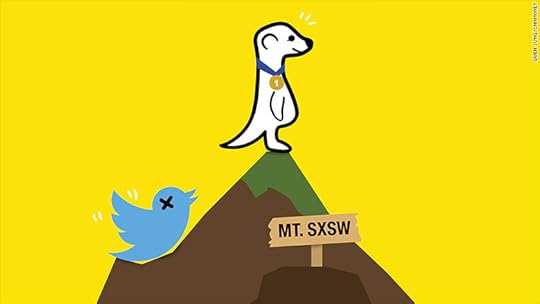
By now you must have heard about Meerkat, the latest tech media darling that lets people tweet (stream) live experiences with friends and followers on Twitter. It’s basically an easy to use app that combines ephemeral livecasting/livestreaming on top of the Twitter platform but through a dedicated screen where participants can see video, who’s watching as well as the Tweets between them. I call it Meerkasting and yes, it’s already a verb. I realize that most of the words I used up until this point were either geeky or buzzwordy.
Leading up to the big SXSW Interactive event in Austin, Meerkat started to gain significant momentum. At SXSW, it was all the geeks could talk about and do (Meerkast). Brands too. This makes Meerkat one of the prestigious few apps such as Twitter and Foursquare to break out at a festival known for its many amazing experiences as well as its distractions. This attention doesn’t guarantee longer term success however. Sorry Highlight.
During the event, I spent several moments with CNN’s Sarah O’Brien who authored a series of articles on Meerkat’s rapid rise to digital relevance. Following is a summary of our conversation…
What’s the viability of Meerkat, to stay hot and keep people engaged? Is it just a tech/media thing or are others around the world just as interested?
It’s easy to ask what’s the viability of any new startup that appears out of nowhere these days. Meerkat introduces a new way to foster engagement in social communities while adding a new experience layer to Twitter. At the same time, there’s been a race for years to make livestreaming an everyday form of communication. At the moment, Meerkat is definitely something celebrated by the early social media adopters and is promising for younger users as well. It’s true test will come at and immediately after SXSW (a 30k strong tech festival in Austin). And, its performance in the near term will also be a true test for livestreaming over all.
What’s the potential for profitability?
I look at Snapchat when I think about monetization for Meerkat. The natural play is to offer a premium service for celebs and digital influencers. I don’t see that working. I believe media will pay to access elusive connected consumers much in the way media and brands are doing so with Snapchat discover today.
Why live-streaming now when others, like Qik, have tried and failed?
Technology believe it or not wasn’t there before. Additionally, social media and mobile were still becoming pervasive in everyday culture. At the same time, livestreaming and livecasting placed too great of an emphasis on the user to generate buzz and audience. Now, in an era of ephemeral engagement and message-based communication, Meerkat touches upon something we have and will do, in this case, Twitter followers and events. They come and go and therefore enhance Twitter’s experience, deliver ephemeral livestreaming aka Meerkasting (new potential buzzword), and create a tighter community bond.
Do you have any insight on the Twitter/Periscope deal? Think Twitter will eventually kick Meerkat from using it as a platform? Could Meerkat have success as a stand-alone site?
Periscope is a natural acquisition for Twitter allowing it to offer an additional value-added experience which extends Twitter as a media platform and not just a sharing platform. It’s Twitter’s Instagram vs. Snapchat if you will. I wouldn’t rule out the independent success or an acquisition of Meerkat either. It’s Instagram vs. Snapchat where one offers a lasting vs. ephemeral experience.
What will it take for Meerkat to survive?
Meerkat is going to need to look at optimizing the experience across other social platforms. Its reliance on Twitter exposes a weakness for the app to maintain long term scale. And, with Twitter limiting social graph access, Meerkat is already at risk of losing momentum and relevance. Additionally, it needs to also ensure that content producers and content consumers find one another similar to that of a TV guide or directory.
For more on Meerkat, Twitter’s developer platform and SXSW, please listen to the latest episode of Context Matters.
Connect with me… Twitter | LinkedIn | Facebook | Youtube | Instagram | Pinterest
March 17, 2015
Insights: Interviews on The Future of Social Media as Curated by Anil Dash and Gina Trapani
I’ve long admired the work of Anil Dash and Gina Tripani over the years. In many ways, each has shaped my perspectives in new media and its impact on our professional and personal lives over the years. It came as no surprise that Dash and Tripani collaborated on yet another project. This time, they created ThinkUp, a social media service that offers daily insights about you and your friends on Twitter and Facebook.
To celebrate the launch of their latest venture, they assembled some of their most thoughtful colleagues to share their thoughts on the future of social media. The result is a thought-provoking ebook featuring the likes of Fred Wilson, Steve Case, danah boyd, Joi Ito, Tim O’Reilly, Kathryn Finney, Jason Fried, John Gruber, Chelsea Peretti and a whole bunch of other people I geek out about.
I’ve provided an excerpt of my contribution below. The entire ebook follows via SlideShare.
When did you first realize that social networks were going to change how you live or work?
As a kid, I would spend time exploring bulletin boards. I thought it was cool. But as a teenager, I assumed it was something everyone did. In the mid-90’s however, and as a young man, I realized the importance of connectedness and engagement. Forums, boards, and early blogs transformed my perspective of how information travels and how people are influenced. I grew up both analog and digital and as a result, I saw the strengths, weaknesses and opportunities with both traditional and social media. Working in media and marketing at the time, I believed that understanding social media would set me on a path where I could make an impact in a new realm. In February of 1999, I started FutureWorks, a company dedicated to digital influence and new media. I ran that company until I joined Altimeter Group in March 2011.
What moment or moments stand out to you as the most meaningful ones you’ve had online?
For the first several years of venturing into social, I was a consumer and a student. I studied relentlessly to learn how to add value and build community for a variety of industries I worked in at the time. I link this to also being an introvert in real life. Somewhere in the early 2000’s, I decided to share everything I had learned and was learning. My goal was to do so using only new media. I remember feeling a sense of validation, that others also found value in my perspective, and also a sense of acceptance, that sharing with friends and strangers allowed me to connect without the anxiety of stepping out of my comfort zone. Perhaps online interaction helps someone earn confidence to become a bit more outgoing or approachable in everyday life.
Each time I publish, it’s my intention to deliver value and also invite discourse. With every interaction, I learned and grew. This drives me to this day.
If you could know one thing about the people you’re connected to online, what would it be?
This might sound strange, but I would find it incredibly useful if every network provided a personalized portion in each of your connections’ profiles that shows you how they know you or why they follow you. As networks expand and contract, it becomes almost impossible to remember the source of the link you share with someone. I’m often embarrassed and to some extent troubled when someone from my social network approaches me in the real world with a sense of expectation that I will readily remember who they are and how we know one another… “Hey, it’s me!”
What do you wish the people you follow did more or less of online?
In the barrage of updates that showcase food, activities, humble brags, famous quotes, selfies, politics, et al., I would love to know what they do and don’t get out of social media. I think the value system of it all is evolving in a direction that needs realignment. I don’t believe in information overload. Networking isn’t a reciprocal exchange. Active filtering is our responsibility to maintain value in our social streams. Additionally, it’s our responsibility to invest value in the streams of those who are connected to us.
But back to the value system for a moment. I wish people shared less of what they think is going to spark “engagement” and focused more on what will spark meaningful dialogue and interaction. There’s a difference and I think it has everything to do with why we think we need to constantly monitor our social steams and why and when we should.
What’s the big thing that’s missing from today’s social networks?
I wonder sometimes about the dimensionality of the social web. What I see online reveals one or more sides of someone but has yet to portray the true character and holistic nature of someone. I guess to expect such is unrealistic. When an online relationship is consummated in real life, there’s usually a surprising flood of personality, ethos and perspective that unfold in any given situation. However, I do think that what we share also has an impact on the dimensionality of what others see and the impressions they form as a result. I believe we should be a bit more intentional about what we share to add color, depth, and perspective to our digital persona and how it aligns with our real world identity.
After all, we’ve no choice but to live this so called digital life as best we can for ourselves and those who follow us…literally.
Insights: Interviews on the Future of Social Media – Edited by Anil Dash & Gina Trapani from Brian Solis
Connect with me… Twitter | LinkedIn | Facebook | Youtube | Instagram | Pinterest
Photo Credit: Heart, Shutterstock
March 16, 2015
Creating Truly Personal Omni-Channel Customer Experiences
When I was in London, I visited the Smart Focus HQ to shoot a series of videos, host a webinar and also sign books for local marketing professionals (videos and webinar accessible here.) While there, something unplanned and very cool began to surface and I’m excited to share the result with you here. We assembled all of the content, organized it, and developed additional material as a dedicated ebook. I’ve embedded it below or you can read more about it at Smart Focus.
Creating Truly Personal Omni-Channel Customer Experiences
Customers are more connected and more informed than ever. Digital marketers now need an entirely fresh perspective to succeed in a world where customers and prospects experience their brand in multiple ways – online ads, websites, the mobile web and apps, blogs, email, social media, the call center, web chat, instant messaging and more. In retail, the customer journey might also include a visit to a real world store.
Too often, there is little consistency across these experiences. A lot of big brands, despite paying lip service to multi-channel marketing, still operate web, email, social and mobile channels independently. Customers might click on a link in an email and be taken to a landing page with a very different look and feel. Multi-channel marketing for many simply means promoting their eCommerce channels via email shots, social media posts or SMS messages.
Yet most brands are still on the starting blocks when it comes to true omni-channel marketing. Omni-channel is not just another way of saying multi-channel – it’s a whole new approach, encompassing technology, marketing and a sea change in company culture.
Customers and potential customers share some common desires – they want to be valued, they need engagement to be efficient and consistent, they want to be able to trust your business and to be in control.
But there is an increasing realization that people are individuals – and we all do things differently. It’s no longer possible to have one sweeping, scalable marketing strategy. Empathy and understanding the nuances of customer motivation is vital.
In this ebook, we explain how to build those journeys and develop an omni-channel marketing strategy that appeals to each and every customer and prospect in the way that works for them. The eBook includes exclusive video insights from Brian Solis, and covers subjects such as:
- What is omni-channel marketing and why is it important?
- Being human and staying tech savvy
- Social media – the moment of truth
- Why email marketing is more important than ever
- Using your customer date to create meaningful experiences that matter
- Getting started with omni-channel marketing
Creating truly personal omni-channel customer experiences by Brian Solis and Smartfocus from Brian Solis

